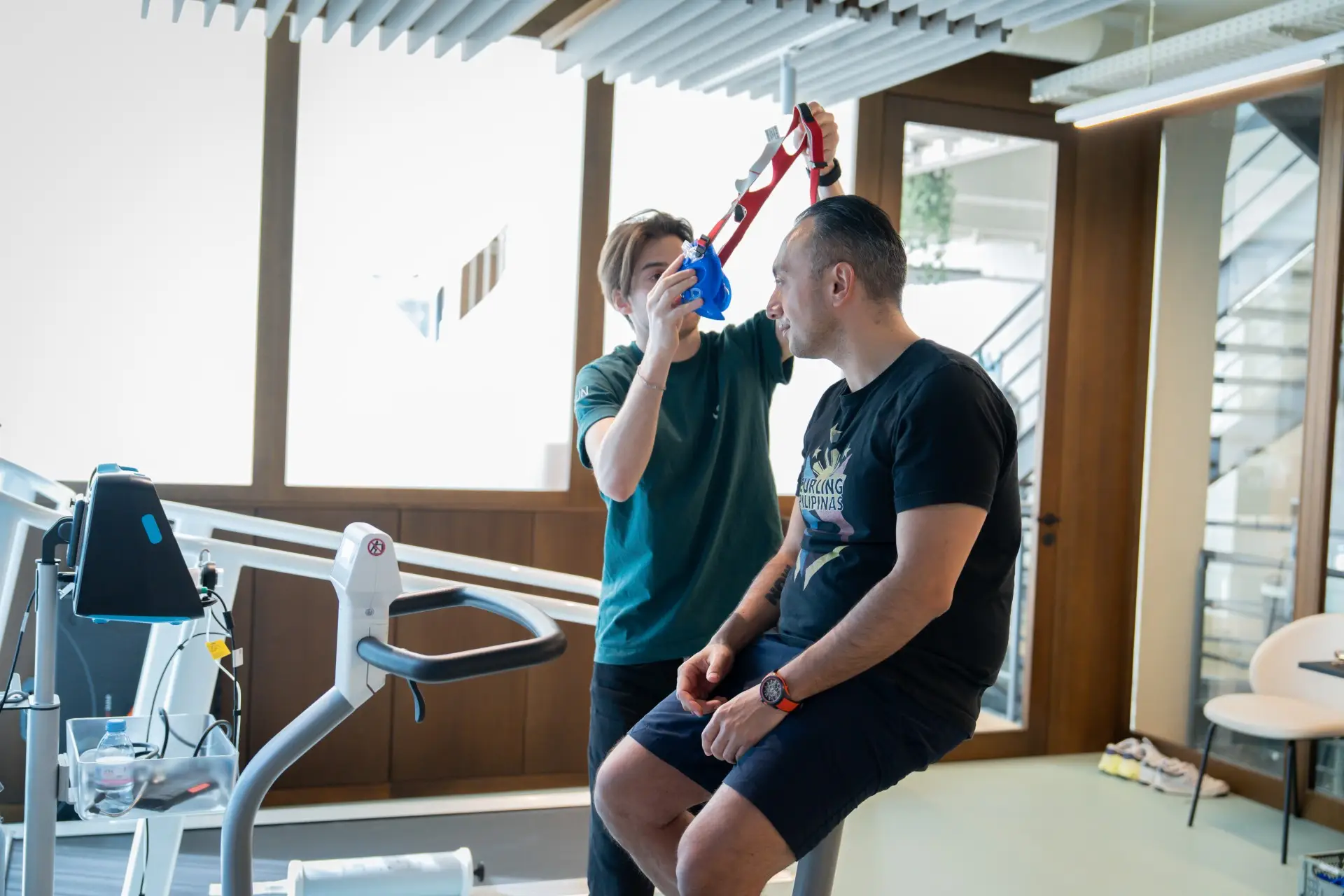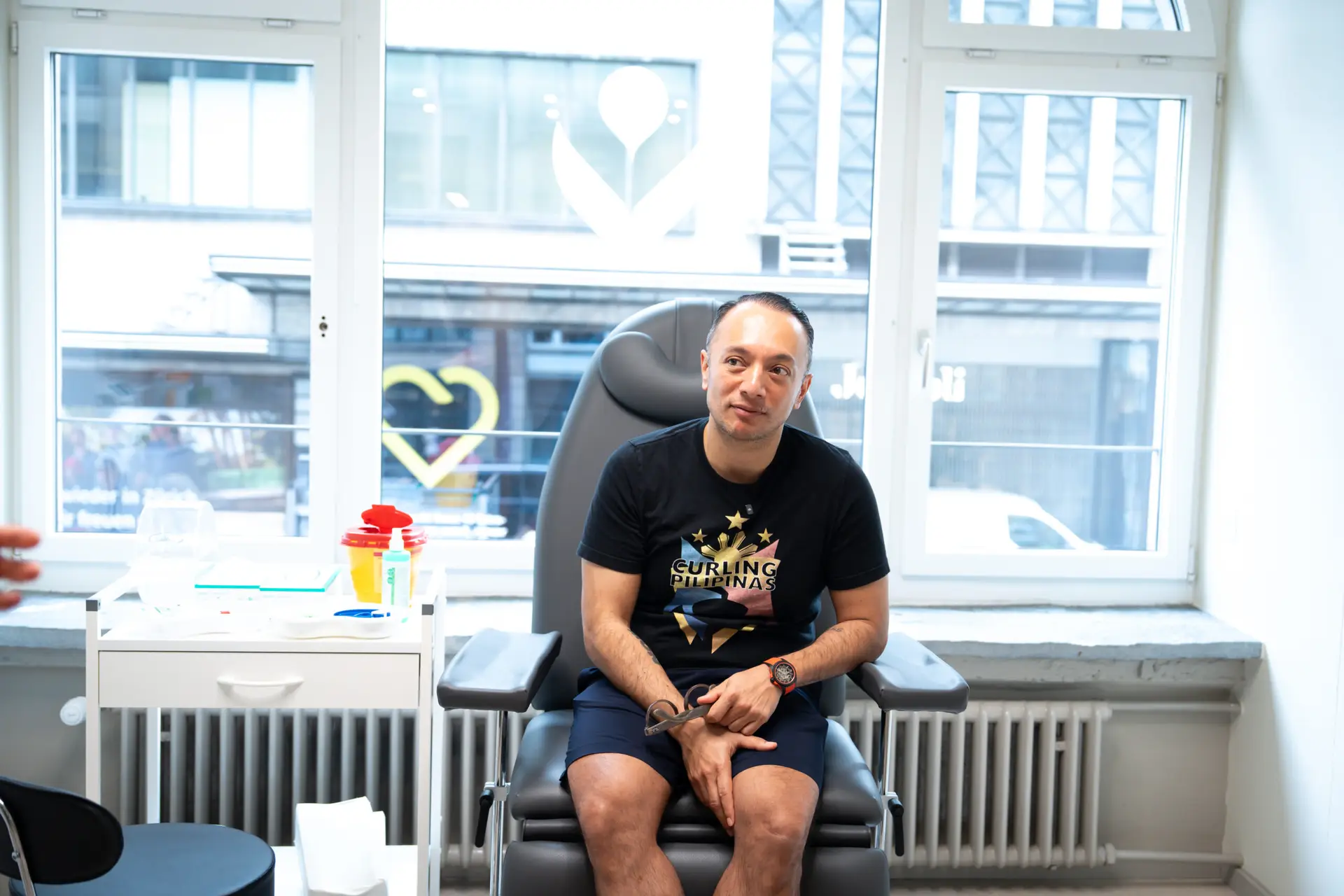Why grip strength and functional stability predict your longevity

Whether it's carrying groceries up the stairs, holding a child in your arms, taming an excited dog on a lead in the park or taking on sporting challenges such as tennis and horse riding - our everyday lives constantly challenge us physically. But how often do we actually think about the silent stars that make all this possible: our grip strength and the functional stability of our body?
Imagine if these abilities were suddenly restricted. Lifting a shopping bag becomes a pain, the tennis racket slips out of your hand and the dog takes us for a walk instead of the other way around. Doesn't sound like much fun, does it? But this is exactly what becomes a reality if you don't pay attention to grip and strength and functional stability. Not only does it become more difficult to cope with everyday life, but the risk of cardiovascular and metabolic diseases also increases.
The following blog post illustrates why grip strength and functional stability are a key factor in AYUN's Longevity Check and the health benefits associated with improved stability and grip strength.
Grip strength as a marker for health and longevity
Grip strength is not just an isolated ability that manifests itself in a firm handshake or carrying heavy loads. Rather, it is a reflection of your overall fitness and an indicator of your physical health and quality of life [1-3]. Why? Because almost every movement in which you carry, lift, pull or push something brings your hands into play - and activates other parts of your body at the same time.
The more active you are, the more you challenge your hands - and automatically train your forearms, shoulders, torso and even your legs. From a stable posture when carrying a bag to a powerful grip on a climbing wall: your hand strength is a central component of your physical performance and daily living.
The special thing about it: as grip strength is almost always trained “on the side”, it is a surprisingly reliable indicator of your overall fitness. It provides insights into your muscle strength, condition and even your state of health [2, 3]. So it's no coincidence that grip strength is considered one of the best predictors of longevity and quality of life [4].
Higher grip strength is associated with:
- Improved cardiovascular health
- Better metabolic health
- Increased well-being
- Stronger bones
- Reduced risk of cognitive decline
- Reduced risk of injury [1-3, 5-6].
Grip strength is closely linked to these health parameters as it is a reflection of how active, strong, muscular, powerful and mobile a person is overall. What is all of this worth without control and stability? Exactly – it quickly becomes a risk! That’s why, in addition to having a strong and powerful "engine," it’s equally important to ensure the stability and reliability of the entire system. This is why functional stability and balance are essential.
Functional stability promotes mobility and minimizes the risk of injury
Functional stability describes the ability to maintain balance and control both in motion and under changing conditions. In everyday life, it helps you to get through any situation safely and efficiently, whether you are carrying heavy bags, climbing stairs or playing with your children. In sport, it enables you to transfer forces precisely, coordinate movements and react quickly to unforeseen situations.Our stability depends on an impressive interplay in the body: the nervous system processes information from the eyes, the sense of balance, receptors in muscles and joints, such as the soles of the feet, at lightning speed. These signals ensure that your body maintains its balance and rebalances its center of gravity even after a “wobble” [7-10].
Functional stability becomes a challenge with increasing age
Around the age of 30, the elements of our postural control - muscles, nervous system and sensory receptors - begin to gradually break down. Biological and metabolic processes slow down and regeneration and repair take longer. These changes often lead to a decline in balance and stability in old age, which significantly increases the risk of falls [11-13].
Alarming numbers show the reality [11]:
- 30% of people over the age of 65 fall each year.
- For people over 70, this proportion rises to 40%.
- Older people with chronic illnesses or physical limitations are particularly affected.
The good news: you can do something about it!
Targeted physical activity and training have been proven to reduce the risk of falling by 15-35%. Regular, personalized training not only improves your balance, but also has a positive effect on your overall health. Less stress, a lower risk of illness and an increased sense of well-being are just some of the benefits [14-16].
Why you should test your hand strength and stability early on
The earlier you know where you stand, the better you can take targeted action and prevent potential issues. Grip strength – or more precisely, what it represents – and functional stability are essential for an active, independent, and self-determined life. Without a thorough assessment, weaknesses often go unnoticed – until it might be too late.
The AYUN Longevity Check-up: your first step towards a healthy old age
The AYUN Longevity Check provides you with a holistic analysis of your hand strength, dynamic stability and other important fitness parameters. These values are the basis for working specifically on your weaknesses and building on your strengths.
Why act now?
Your body is like a bank account: The more you deposit early on, the more you can benefit from it as you get older. Strong hands and a stable balance not only give you security in everyday life, but also give you the freedom to enjoy your hobbies and activities in the long term.
From analysis to optimization: training with AYUN
After assessment, the next step is targeted improvement. AYUN offers safe, individually tailored personal training that focuses on exactly where you need it. Whether it's building your muscles and strength, boosting your stability or improving your overall fitness - with a tailor-made program, you lay the foundation for a healthy and self-determined life.
Take the first step: test your values, recognize your potential and start an active, safe and healthy life with AYUN - today, tomorrow and into old age!
- Musalek, C., & Kirchengast, S. (2017). Grip Strength as an Indicator of Health-Related Quality of Life in Old Age-A Pilot Study. International journal of environmental research and public health, 14(12), 1447. https://doi.org/10.3390/ijerph14121447
- Sayer, A. A., & Kirkwood, T. B. (2015). Grip strength and mortality: a biomarker of ageing?. Lancet (London, England), 386(9990), 226–227. https://doi.org/10.1016/S0140-6736(14)62349-7
- Taekema, D. G., Gussekloo, J., Maier, A. B., Westendorp, R. G., & de Craen, A. J. (2010). Handgrip strength as a predictor of functional, psychological and social health. A prospective population-based study among the oldest old. Age and ageing, 39(3), 331–337. https://doi.org/10.1093/ageing/afq022
- Rantanen, T., Masaki, K., He, Q., Ross, G. W., Willcox, B. J., & White, L. (2012). Midlife muscle strength and human longevity up to age 100 years: a 44-year prospective study among a decedent cohort. Age (Dordrecht, Netherlands), 34(3), 563–570. https://doi.org/10.1007/s11357-011-9256-y
- Leong, D. P., Teo, K. K., Rangarajan, S., Lopez-Jaramillo, P., Avezum, A., Jr, Orlandini, A., et al. Prospective Urban Rural Epidemiology (PURE) Study investigators (2015). Prognostic value of grip strength: findings from the Prospective Urban Rural Epidemiology (PURE) study. Lancet (London, England), 386(9990), 266–273. https://doi.org/10.1016/S0140-6736(14)62000-6
- Wen, Y., Liu, T., Ma, C., Fang, J., Zhao, Z., Luo, M., Xia, Y., Zhao, Y., & Ji, C. (2022). Association between handgrip strength and metabolic syndrome: A meta-analysis and systematic review. Frontiers in nutrition, 9, 996645. https://doi.org/10.3389/fnut.2022.996645
- Thompson, C., Bélanger, M., & Fung, J. (2011). Effects of plantar cutaneo-muscular and tendon vibration on posture and balance during quiet and perturbed stance. Human movement science, 30(2), 153–171. https://doi.org/10.1016/j.humov.2010.04.002
- Kennedy, P. M., & Inglis, J. T. (2002). Distribution and behaviour of glabrous cutaneous receptors in the human foot sole. The Journal of physiology, 538(Pt 3), 995–1002. https://doi.org/10.1113/jphysiol.2001.013087
- Oie, K. S., Kiemel, T., & Jeka, J. J. (2002). Multisensory fusion: simultaneous re-weighting of vision and touch for the control of human posture. Brain research. Cognitive brain research, 14(1), 164–176. https://doi.org/10.1016/s0926-6410(02)00071-x
- Held-Ziółkowska M (2006) Static and dynamic body balance. Mag Otorynolaryngol 5(2): 39-47.)
- WHO. (2007). WHO Global Report on Falls: Prevention in Older Age. World Health Organization.
- Ignasiak, Z., Skrzek, A., Kozieł, S., Sławińska, T., Posłuszny, P., & Rożek, K. (2015). The risk for falls in older people in the context of objective functional studies. AnthropologicAl review, 78(3), 337-346.
https://www.researchgate.net/publication/290195313_The_risk_for_falls_in_older_people_in_the_context_of_objective_functional_studies - Borzym, A. (2009). Falls in old age–reasons, consequences, prophylaxis. Psychogeriatr Pol, 6(2), 81-88.
https://www.researchgate.net/publication/287485670_Falls_in_old_age_-_Reasons_consequences_prophylaxis - Gillespie, L. D., Robertson, M. C., Gillespie, W. J., Sherrington, C., Gates, S., Clemson, L. M., & Lamb, S. E. (2012). Interventions for preventing falls in older people living in the community. The Cochrane database of systematic reviews, 2012(9), CD007146. https://doi.org/10.1002/14651858.CD007146.pub3
- Sherrington, C., Whitney, J. C., Lord, S. R., Herbert, R. D., Cumming, R. G., & Close, J. C. (2008). Effective exercise for the prevention of falls: a systematic review and meta-analysis. Journal of the American Geriatrics Society, 56(12), 2234–2243. https://doi.org/10.1111/j.1532-5415.2008.02014.x
- Sherrington, C., Michaleff, Z. A., Fairhall, N., Paul, S. S., Tiedemann, A., Whitney, J., Cumming, R. G., Herbert, R. D., Close, J. C. T., & Lord, S. R. (2017). Exercise to prevent falls in older adults: an updated systematic review and meta-analysis. British journal of sports medicine, 51(24), 1750–1758. https://doi.org/10.1136/bjsports-2016-096547
More articles

Red Light Masks: A Small Guide
Red light therapy is getting more and more popular, but not all devices live up to their promises. The truth is, many masks don’t meet the standards needed to be effective and some may even do more harm than good. To help you make an informed choice, we’ve put together a short guide with the most important facts.

Olympic Health Check, Part 2: Results & Implications
The results from Alan Frei’s Longevity Check-up are in – and they paint a clear picture. While Alan’s baseline health is assessed, specific areas were defined that require targeted improvement if he wants to increase his odds of making it to the 2026 Winter Olympics.

Ready for the Olympics? Part 1: Alan Frei’s Longevity Check-up
Alan dreams of participating in the 2026 Winter Olympics. The catch? He has spent far more time in business meetings and office chairs than on running tracks or ice rinks. Can he still make it? A key element on his journey is the comprehensive health check-up he completed at the Longevity walk-in clinic AYUN in Zurich. Read on to discover how Alan had his body thoroughly tested by medical experts.








